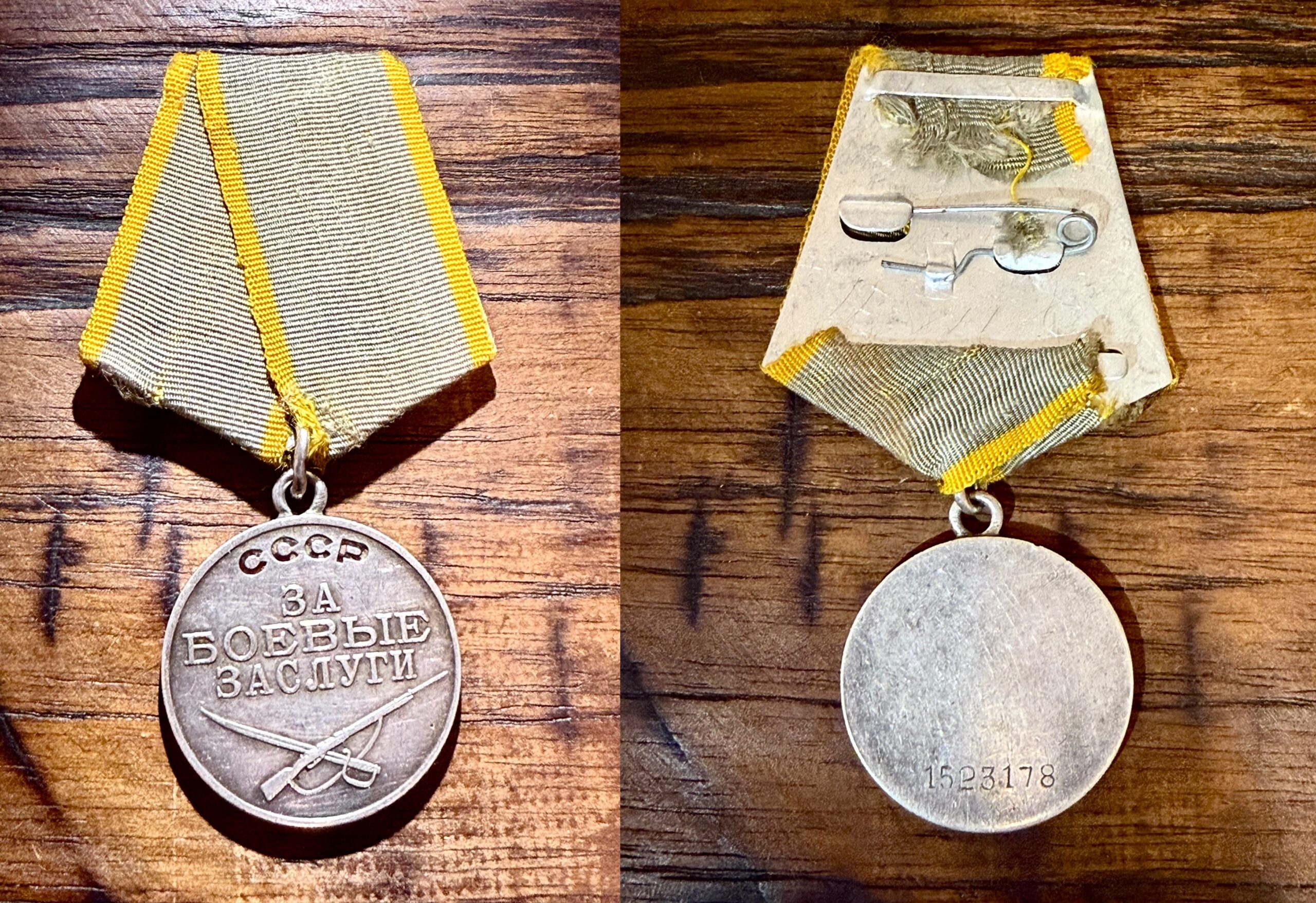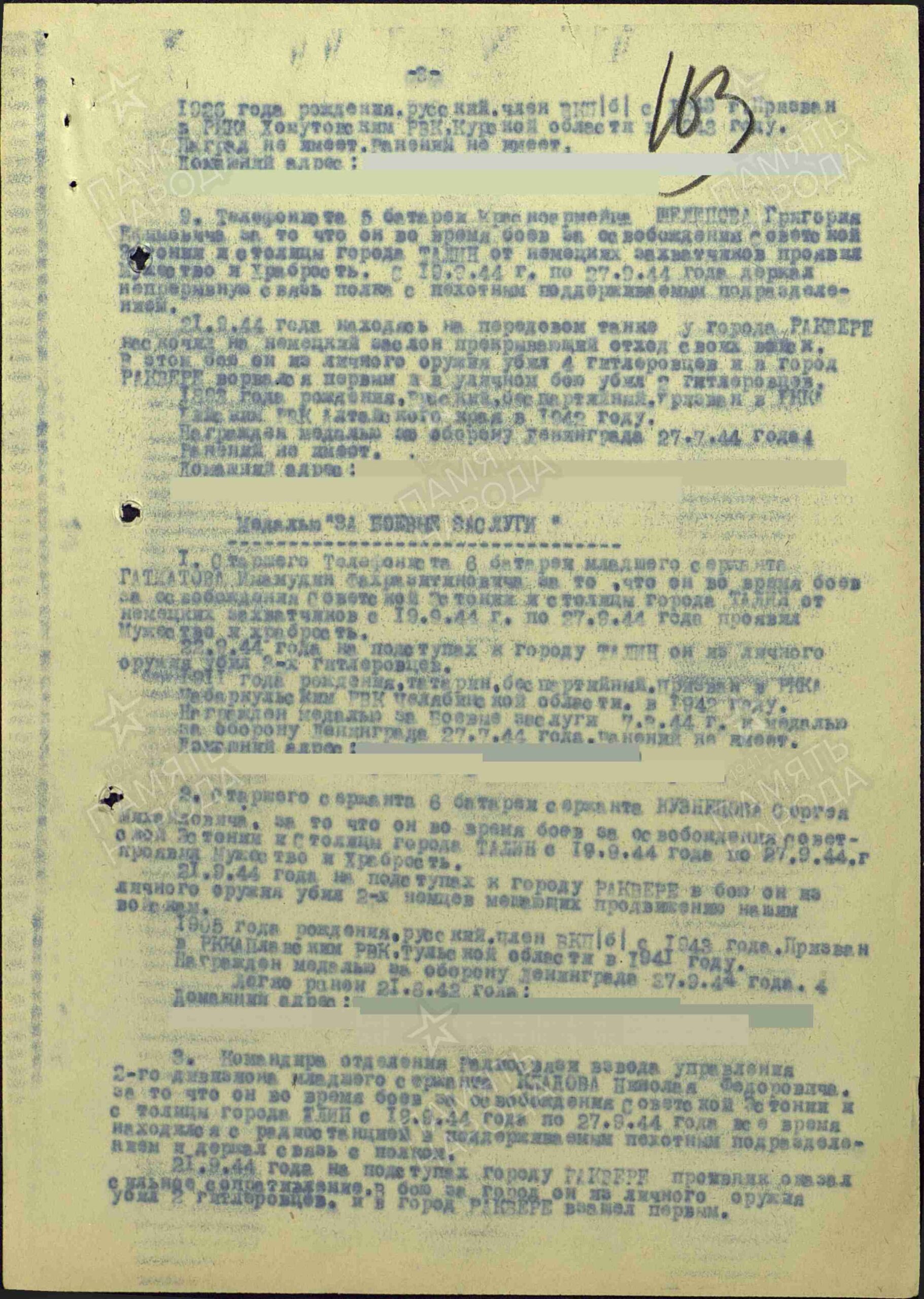For Battle Merit
Description
A state award of the USSR, issued for skilled, proactive, and courageous actions involving life-threatening risk, contributed to the success of combat operations against the enemies of the Soviet state. The third most widely awarded Soviet military decoration: 5.200.000 medals were awarded. There are no inscriptions or images on the front. On the reverse, the award number is engraved horizontally near the bottom. The medal was made of 925 sterling silver.
Despite being named “For Battle Merit,” it was sometimes awarded for excellent non-combat service, like maintaining equipment, logistics work, or keeping communication lines running. Because of this, people joked that you could earn it for “keeping the samovar hot” in the rear.
Interesting facts
The medal had a controversial reputation and was sometimes the subject of inappropriate jokes. There was a partially justified prejudice that it was awarded to “field wives”. As a result, many women were embarrassed to wear this medal openly after the war.
Citations from the book “And the Dawns Here Are Loud: The Female Face of War” by Artem Drabkin (2012).
At the same time, women were constantly subjected to harassment, especially from commanders. Zoya Alexandrova remembers: “I ended up in the 251st Tank Regiment. But it wasn’t by chance — as it turned out, I was ‘assigned’ to the deputy commander for political affairs, Popukin. That’s when I started to hate political officers.” The harassment followed a typical pattern: a girl would be summoned to the commander’s dugout in the evening under the pretence of receiving orders. Knowing this, some girls replaced buttons on their pants with drawstrings — you could only get them off by cutting them. Of course, women always had a way out — getting pregnant. In such cases, they would be discharged from the army by the sixth month.
Aviation technician Nina Kunitzina recalls: “My dear mother wrote to me: ‘Sweet daughter, many of your girls have already come home and are having babies, but why are you still there? Come home, I won’t scold you for having a child.’ Some did just that, while others found themselves a ‘protector’ with big stars and became field wives.”
Tankman Vasily Bryukhov explains: “Imagine — 1200 men in our brigade. All young. All flirting. And just sixteen girls. One doesn’t like this one, and another turns down that one, but someone likes someone, and they start dating and then living together. The rest were just jealous. The envy of those who “didn’t get lucky” knew no bounds. They made up crude jokes: “Ivan gets a dick in the ass for an attack, Mashka gets the ‘Red Star’ for her pussy.” They nicknamed the Medal for Combat Merit, often awarded to officers’ girlfriends, as the “Medal for Sexual Effort.”
Zoya Alexandrova recalls: “My future husband, a reconnaissance platoon commander, sat me by a table in a bathhouse. He crossed his legs, cigarette in hand, very gentlemanly. He started asking who I was and where I was from. ‘Got any medals?’ — ‘Yes.’ — ‘Which one?’ — ‘For Combat Merit.’ — ‘Ahhhh…’ After the war, he told me: ‘At first, we thought you’d sinned a lot and came to us to repent.’”
My medal
The medal I got came from Estonia, was cheap enough like many others, and like every other medal “For Battle Merit” given during WW2, it is 1523178. According to the number, it was issued in the second half of 1944. There is something scratched at the back: “Арун. С”, which means “Arus. S”. I found out that several people with this name have received medals, and maybe this medal was reattached to the suspension of that person’s medal.
I was lucky with my medal lottery. I discovered who the owner of that particular medal was by the number. Before this medal, he received the medal “Defence of Leningrad” (27.09.1944). After this award, he got a medal “For Courage” (20.02.1945) and the Order of the Red Star (19.04.1945). Probably ended the war as a squad commander of the 104th Tallinn Army Regiment. According to several archive documents, this person often went on solo attacks, facing multiple enemies and defeating them, correcting his own troops’ fire to positions of enemies from short distances.
To award Senior Sergeant of the 6th Battery, Sergeant Sergei Mikhailovich Kuznetsov, for his courage and bravery during the battles for the liberation of Soviet Estonia and the capital city of TALLINN from 19.9.44 to 27.9.44. On 21.09.44, on the approaches to the city of RAKVERE, in battle, he killed 2 Germans with his personal weapon who were hindering the advance of our troops. Born in 1905, Russian, and a member of the All-Union Communist Party (Bolsheviks) since 1943, mobilised to the Red Army by the Plavsk District Military Commissariat of the Tula Region in 1941. Awarded a medal for the defence of Leningrad on 27.9.44. Slightly wounded on 21.8.42. Home address: (hidden). Order of the unit no 11/n, 03.10.1944. Issued by: 104th Army Mortar Regiment of the Leningrad Front.



